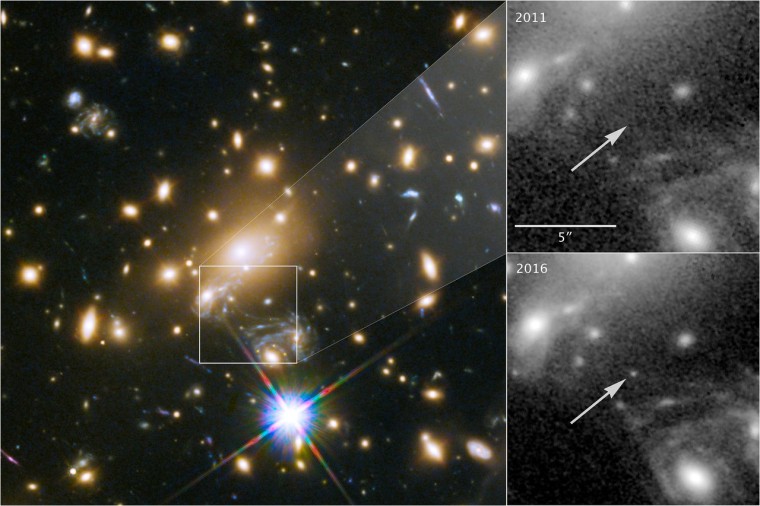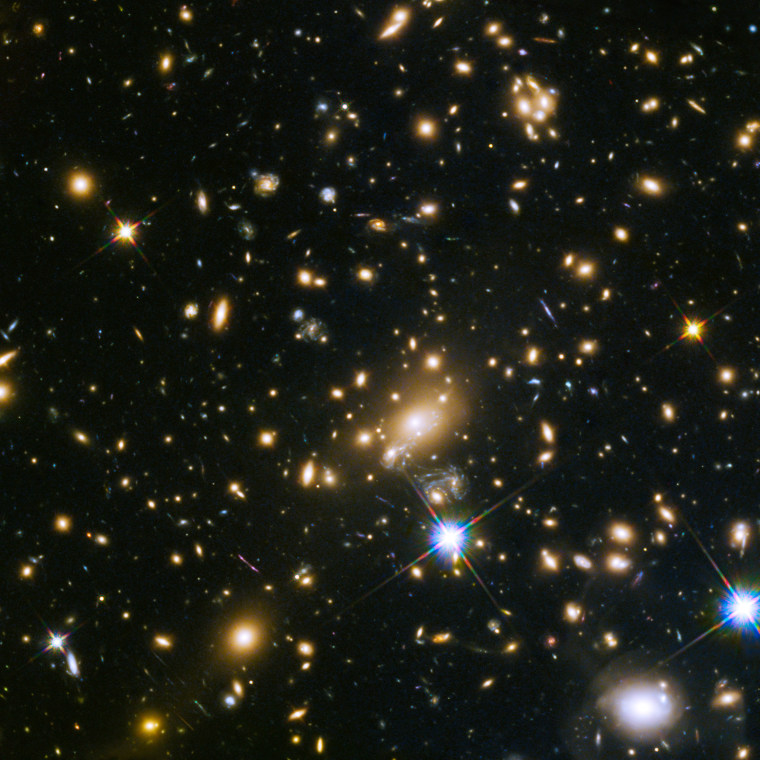In a spiral galaxy more than halfway across the universe, astronomers have discovered what they say is the most distant star ever observed.
Galaxies have been observed at greater distances, but at more than 9 billion light-years from Earth, the huge blue star is at least 100 times farther away than any other individual star ever seen.
Dubbed “Icarus,” the newfound star is about a million times more luminous than the sun but is so far away that its glow is too faint to be detected by even the world’s largest telescopes. The star was visible only because astronomers employed a trick of nature known as “gravitational lensing,” in which gravity from galaxies between Earth and the star acted as a sort of magnifying lens that amplified its light rays.

The discovery caught the scientists by surprise.
“We were using the Hubble Space Telescope to take observations of the first supernova that appeared multiple times on the sky,” Dr. Patrick Kelly, a University of Minnesota astrophysicist and the leader of the team of scientists who made the discovery, told NBC News MACH in an email. “The discovery of the lensed star was completely serendipitous — we weren’t looking for it.”
The star’s official name is MACS J1149+2223 Lensed Star 1, or LS1 for short. Kelly and his colleagues gave it the informal name of Icarus after the doomed character from Greek mythology who donned wings of feathers and wax but perished when he flew too close to the sun.
Dr. Louise Howes, a postdoctoral researcher at Lund University in Sweden, called the Icarus finding “remarkable.” Howes, who in 2015 led a research team that discovered some of the oldest stars in the universe, said stars like Icarus typically burn brightly but die young.
But Howes, who was not involved in the discovery of Icarus, said such stars have lessons to teach us. “Finding distant stars like LS1 is our only way of looking at the history of the most massive stars,” she told MACH in an email. “So this discovery is a big step towards looking at a much wider range of stars in the history of the universe.”
And Hubble’s even more powerful successor, the James Webb Space Telescope, could make it possible to find many more far-flung stars after it is launched in 2020. And though such stars are ever so distant, they could help scientists understand conditions closer to home.
“I’m excited about what this means for the future — if we can discover more stars like this,” Howes said, “perhaps even further away, then we can start to compare these stars to massive stars in the Milky Way.”
A paper about the discovery was published April 2 in the journal Nature Astronomy.

